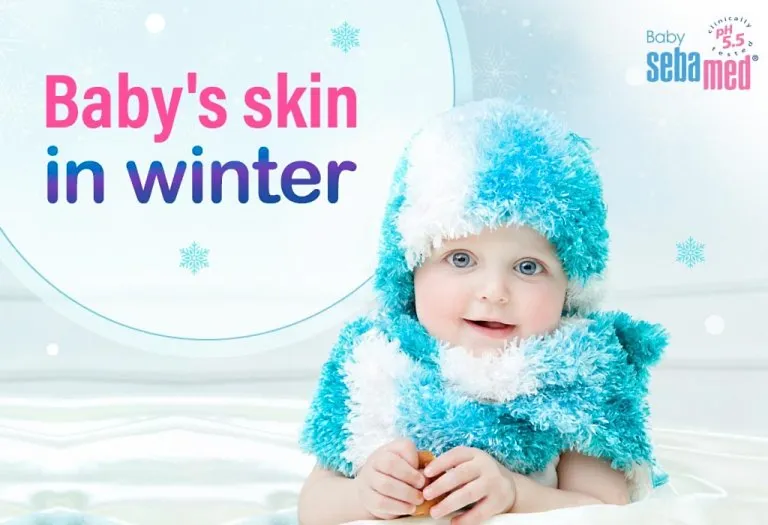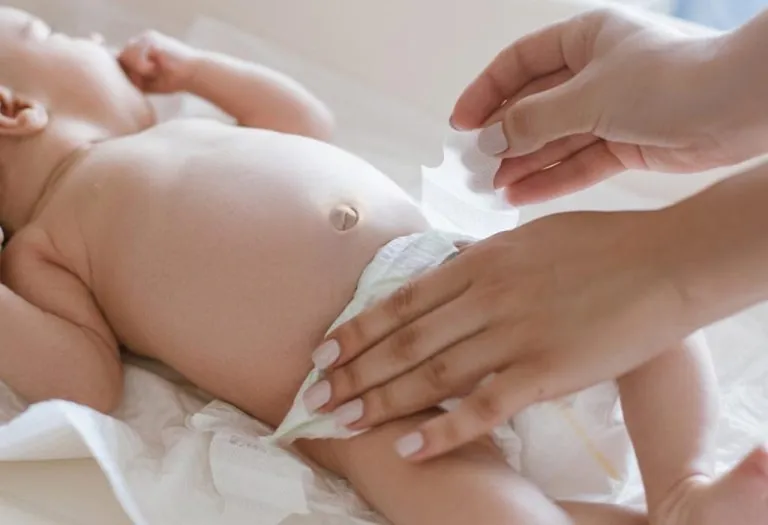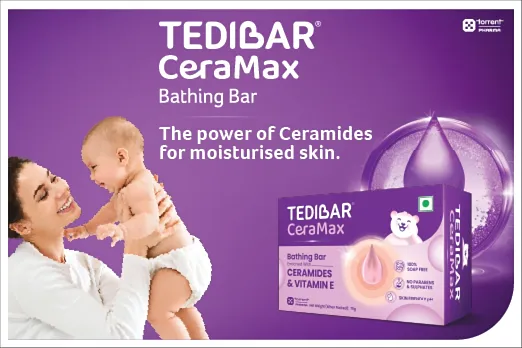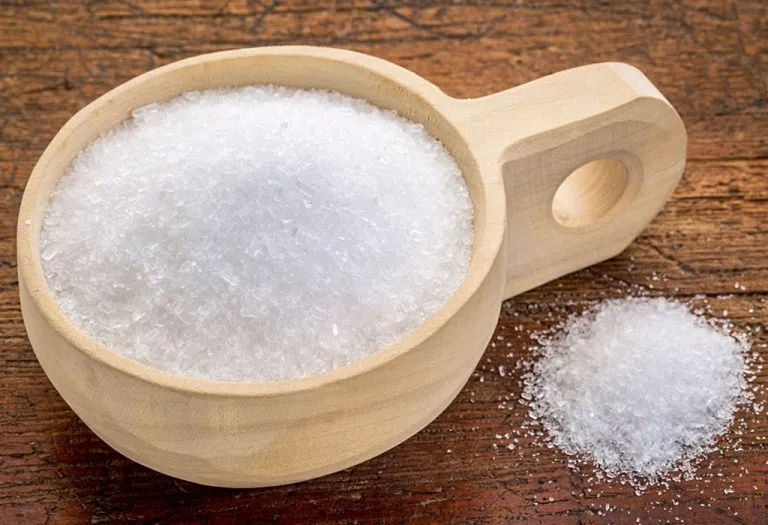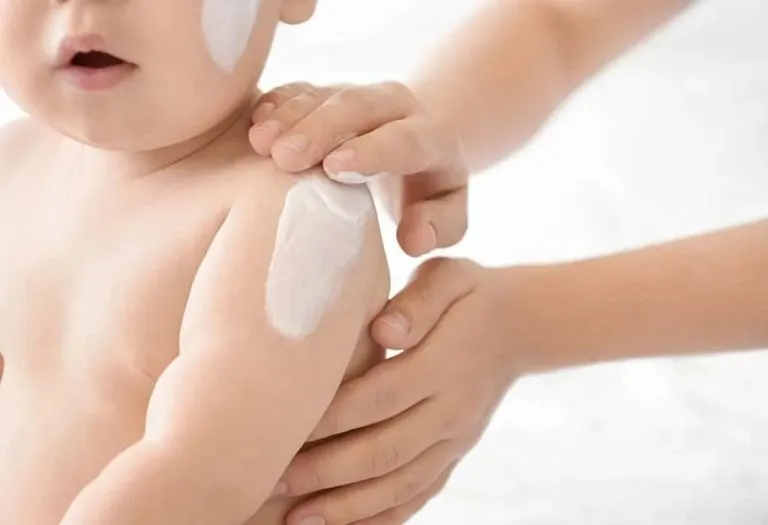Winter Baby Skin Woes and How to Avoid Them?
The winters are a merry time for one and all! It brings all the joys of cosy sweaters, warm blankets, Christmas carols, gifts, and togetherness! As parents, you might be excited to immerse yourself in the holiday spirit and introduce your little one to all the long-held family traditions.
But with all the fun also comes some winter woes! While the cold weather might be a welcome experience after a hot and humid year, the temperatures are not forgiving on your baby’s skin. Babies have incredibly soft and sensitive skin and are prone to skin problems when exposed to the elements.
So, what skin conditions should you look out for in your babies during the cold winters, and what measures can you take to protect your baby? Read on to find out more!
Common Winter Baby Skin Woes
Here are some winter baby skincare woes.
1. Eczema
This is the top cause for concern for all parents when it comes to their little ones! Eczema is a hereditary and recurring skin condition marked by dry, flaky skin, redness, swollen skin or small bumps, irritation, itchiness, and dryness. It is more common in newborns and infants as their skin is still sensitive, and the smaller surface area means they retain less moisture – leading to dryness. Eczema tends to flare up due to your baby’s genetic makeup. Still, it is also triggered by certain materials like wool (which is generally favoured during winters), allergens, asthma, pet hair, and, more importantly, due to the climate.
2. Dry Skin
A more common skin problem that occurs during the winter is dry skin. Your baby’s immune system has not yet fully developed and lacks the naturally occurring moisturising agents that adults have, which makes them more susceptible to skin dryness. Additionally, low humidity in the air and extreme hot or cold temperatures can further suck out moisture from your tiny tot’s skin and leave it dry. Symptoms of dry skin in babies include rough, flaky, and patchy skin, which is more easily observed on exposed areas like the hands and cheeks. Continued exposure to elements and prolonged dryness can lead to breaks or cracks in the skin, which can become infected or even bleed. It may also indicate eczema if you notice redness or persistent itchiness.
3. Diaper Rash
Another common occurrence during winter is a diaper rash. A diaper rash appears due to excessive trapped moisture or friction. During cold seasons, you tend to layer your baby up to protect them from cold. But these layers tend to rub against one another and cause the diaper to move, which, in turn, causes friction that leads to a rash. The extra head from all the clothing might also cause your child to sweat and ultimately cause a diaper rash. Most importantly, if the diaper is not changed often, it also leads to a rash on your baby’s bottom and other bits covered by the diaper.
4. Chapped Lips
As babies, your energetic and lively munchkins tend to drool a lot, have a leaky nose, lick their lips or suck on toys, fingers and other objects. This weakens the protective layer of the top skin on their lips and nose and breaks it down, making it more vulnerable during winter. Moreover, our lips (and your baby’s) don’t have natural oil-producing glands to moisturise them. So, when the cold, dry air hits the lips, it leads to dry skin that cracks, leading to chapped lips.
5. Fungal Infections
The dreaded fungal infection is last on the list of winter skin woes for babies. It occurs in the joints and skin folds, where it is more likely to trap damp, warm moisture. This includes sports like the fold near the elbow, behind the knees, and your baby’s bottoms. Fungus and yeast favour such environments and become blisters or red bumps and cause irritation.
But don’t fret! We bring top tips and product recommendations to ensure that your cutie pie’s skin remains soft and supple through the chilly season so you can all enjoy the most wonderful time of the year!
Head-to-Bottom Tips to Protect Your Baby’s Skin in Winter
At birth, your infant’s skin is at a pH level of 7, and the acid mantle that protects their gentle skin takes three months to develop. So, it is essential to maintain the ideal pH of 5.5 from day one, as it keeps the skin soft and defends it from infections and irritation. Here are some steps to ensure you maintain that pH balance.
1. It Begins with a Bath
As you start the day with your little one, the most essential skincare time is during their baths! During the cold months, there are a couple of things to keep in mind while bathing your baby:
- Check the temperature – Make sure that the water is lukewarm! Most parents think a hot shower keeps the cold away and the baby warm. But in reality, the hot temperature harms their sensitive skin and can cause dryness and red skin.
- Make it short and sweet – Prolonged baths increase the chances of drying out your angel’s skin, so don’t extend bath time, especially at night.
- Use gentle soaps or bathwash – Your baby’s skin is porcelain and can easily crack or damage. So, avoiding foamy soaps and washes or ones with a pH of 5.5 is best. Research shows that at pH 5.5, a baby’s lipid and moisture loss are at their lowest. Sebamed’s Baby Wash Extra Soft is suitable for babies as it maintains a pH of 5.5 and is a no-tears formula without formaldehyde. It also contains lipids and botanical ingredients that lock in moisture and reduce allergic reactions.
- Dry them gently – When your little one is ready to be dried off, always use a soft towel and gently pat them dry. Avoid rubbing them too long, as these remove all the desirable moisture from their bodies.
2. Time to Moisturise
Now that your ball of cuteness is all fresh and ready to begin the day, the next step is to moisturise! No matter the season, moisturising your baby ensures that your baby’s skin remains soft and irritation-free. The best time to do so is right after a bath. Remember to use moisturisers like Sebamed’s Baby Lotion, which maintains a pH level of 5.5, has a botanical fragrance, natural and essential oils, and is hypoallergenic. It does the trick as it spreads easily, absorbs quickly, and contains soothing ingredients like chamomile and allantoin. For high-stress areas that your tiny tot often uses – like their elbows, knees, hands, and legs- try the Sebamed Cream Extra Soft.
3. Let’s Get Dressed!
Here’s the fun bit – picking an outfit to match the day’s mood! But first, it’s time to lock in those baby bottoms securely in a diaper! Always ensure you pick the correct diaper size and secure it fast (but not too tight!). This prevents the diaper from moving around and causing rashes from friction. In case your little one is already suffering from a niggling rash, use a rash cream that contains zinc and titanium oxide to soothe the rash and a pH of 5.5 that protects your baby from microorganisms and prevents further moisture from exacerbating it. Avoid using baby powder as it increases dryness.
When it comes to clothing, ensure your baby is fully covered in warm protective layers, but ensure that it is a soft fabric to avoid skin irritation and itchiness.
Of course, you can’t leave out your baby’s cute face! As with other baby skincare regimes, it is vital to choose a face cream that is gentle, non-greasy, has a pH of 5.5 and protects your little one’s face from any dryness that drools and dribbles might cause. And how can we forget those adorable, pouty lips? Finish off your munchkin’s look with a luscious Sebamed Baby Lip Balm dab, and your baby is set to conquer the day!
4. Lock it In and Make it Cozy
It is essential to ensure your baby’s skin stays hydrated throughout the day. A gentle, comforting massage improves blood circulation, leading to softer, bouncier skin. Pick any non-sticky massage oil with natural oils and use a circular motion while applying.
Using humidifiers might also be an excellent way to introduce moisture into the room, and make sure to regulate the temperatures when you’re within the house to avoid dryness.
6. Good Night, Sweet Dreams!
After a long and eventful day, your baby is ready to catch some Zs! But the skincare routine doesn’t end here. You can use creams made for babies before bed to ensure they are protected from the elements overnight and their skin maintains its tender glow.
Winters are a time to be merry, but as you load up on the layers, it is also essential to add extra layers of protection to your baby’s skin. Always do a patch test when trying new skincare products to ensure they don’t cause a reaction. Consult your child’s doctor before you do so!
Also Read:
Baby Skin Care Ritual
Monsoon Baby Skin Care
Why an Ideal pH 5.5 is Important for a Newborn’s Skin
Was This Article Helpful?
Parenting is a huge responsibility, for you as a caregiver, but also for us as a parenting content platform. We understand that and take our responsibility of creating credible content seriously. FirstCry Parenting articles are written and published only after extensive research using factually sound references to deliver quality content that is accurate, validated by experts, and completely reliable. To understand how we go about creating content that is credible, read our editorial policy here.






